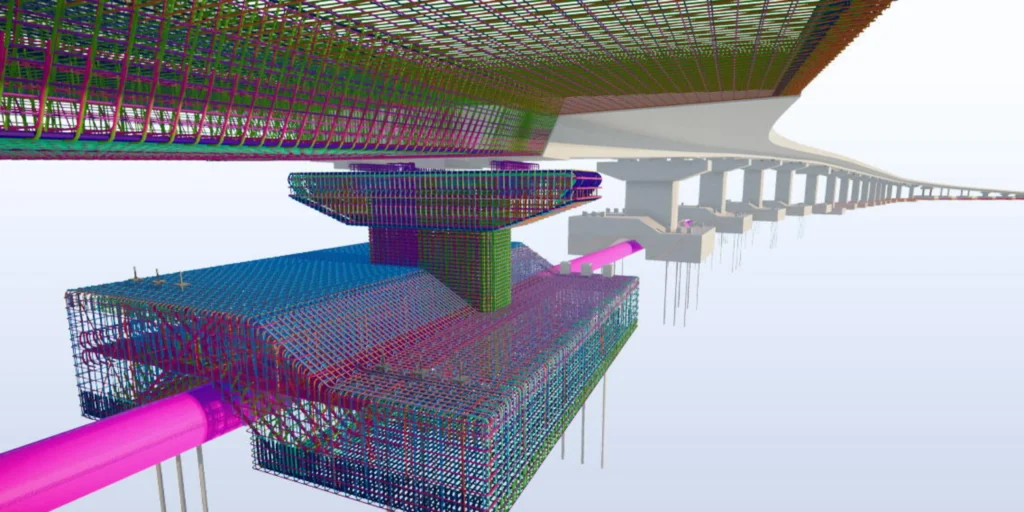Top 6 Scan to BIM Success Stories Globally

Scan to BIM (Building Information Modeling), or point cloud to BIM, is a process where 3D laser scanning or photogrammetry data (point clouds) is converted into a detailed digital model using BIM software. Scan to BIM (Building Information Modeling) is more than just a technical process; it’s a revolutionary approach that’s reshaping the architecture, engineering, and construction (AEC) industries. By utilizing advanced 3D laser scanning or photogrammetry, professionals can transform raw point cloud data into intricate digital models. This technology captures the precise geometry and spatial relationships of buildings and infrastructures, providing a solid foundation for accurate documentation and efficient project planning.
The architecture, engineering, and construction (AEC) industry is undergoing a significant digital transformation, and Scan to BIM is at the forefront of this change. With its ability to deliver unmatched precision and efficiency, Scan to BIM is not just a tool; it’s a catalyst for innovation. It empowers architects, engineers, and construction professionals to tackle projects with greater insight and confidence.
In this blog post, we’ll take a closer look at six remarkable success stories from around the globe that highlight the versatility and transformative power of Scan to BIM technology. These examples illustrate how organizations are leveraging this cutting-edge approach to enhance their workflows, improve collaboration, and ultimately deliver better results.
Top 6 Scan to BIM Projects Transforming Architecture
1. The Sydney Opera House, Australia

The Sydney Opera House, an iconic symbol of Australia, is renowned for its unique architectural design. However, its complex structure posed significant challenges for maintenance and renovation. The introduction of Scan to BIM technology offered a solution.
In 2013, the Sydney Opera House embarked on a project to create a detailed digital model of the building using laser scanning technology. The aim was to facilitate ongoing maintenance, renovations, and future planning while preserving the integrity of this UNESCO World Heritage site.
- Process: A combination of laser scanning and photogrammetry captured the complex geometry of the sails and other architectural elements. The data was processed to create an accurate 3D model.
- Outcome: The BIM model enabled the design team to conduct clash detection, ensuring that new installations would not interfere with the existing architecture. This proactive approach reduced construction delays and improved coordination among various stakeholders. The detailed BIM model enabled precise planning for maintenance work, ensuring minimal disruption to the building’s operation.
2. Helsinki Airport, Finland

The expansion of Terminal 2 at Helsinki Airport stands out as a remarkable success story in the realm of Scan to BIM technology. The project’s goal was to boost the airport’s capacity by adding new jetways for wide-body aircraft and expanding the terminal to a spacious 103,000 square meters.
Thanks to Scan to BIM, the project team created highly detailed 3D models, which played a crucial role in fostering seamless collaboration among architects, engineers, and contractors. This advanced technology allowed the team to visualize intricate designs and evaluate the feasibility of integrating solar panels into the terminal’s architecture.
The outcome? The project not only earned the Tekla 2022 Global BIM Award in the Public category but also demonstrated the power of Scan to BIM in streamlining processes and enhancing project results. By ensuring that all stakeholders were aligned throughout the construction phases, the project set a new standard for efficiency and collaboration in large-scale infrastructure development.
3. MSG Sphere, Las Vegas, USA

The MSG Sphere in Las Vegas is truly a marvel of modern engineering, standing 112 meters tall and boasting the world’s largest LED display. This groundbreaking entertainment venue is not just about its impressive size but also about the intricate technology that made it possible.
One of the key players in this project’s success was Scan to BIM technology. By turning laser scans of the construction site into detailed 3D models, the team could navigate the complex design and construction processes with unprecedented precision. These digital models allowed for meticulous planning and seamless coordination among the many contractors involved.
The ability to visualize the project in 3D was a game changer, facilitating better planning and collaboration while significantly reducing the chances of errors. The MSG Sphere’s construction is a prime example of how Scan to BIM can elevate the building of large-scale, complex structures, transforming ambitious visions into reality with enhanced accuracy and teamwork.
4. Shanghai Disneyland, China

The Enchanted Storybook Castle at Shanghai Disneyland is a shining example of how Scan to BIM can bring a grand vision to life. This ambitious project brought together a global team of architects, engineers, and subcontractors to build one of the largest and most enchanting Disney castles.
Scan to BIM played a crucial role in this endeavour, allowing the team to develop precise 3D models that greatly improved collaboration and communication. With real-time updates and modifications, everyone involved had access to the most current information, streamlining the process and ensuring smooth coordination.
Thanks to the effective use of Scan to BIM, the project not only ran more efficiently but was also completed on schedule. The Enchanted Storybook Castle stands as a testament to modern construction techniques, demonstrating how advanced technology can help create something truly magical.
5. Ovalo Monitor Bridge, Peru

The Ovalo Monitor Bridge in Peru, stretching an impressive 870 meters, stands as a testament to cutting-edge infrastructure design and technology. With its combination of straight and curved sections, the bridge presented unique challenges that required precise planning and execution. To meet these demands, the project team turned to Scan to BIM technology.
Scan to BIM played a pivotal role in this ambitious project. By creating a detailed cloud-based data environment, the team enabled smooth and effective collaboration among all stakeholders. This approach allowed for early detection of potential issues and conflicts, which could be addressed before construction even began. The result? A streamlined construction process that avoided costly delays and ensured the bridge’s structural integrity.
The success of the Ovalo Monitor Bridge project underscores the transformative power of Scan to BIM. It’s a shining example of how advanced technology can enhance the management of large-scale civil engineering projects, making construction workflows more efficient and effective.
6. One World Trade Center, New York City, USA

One World Trade Center in New York City stands as a testament to the power of Scan to BIM technology in managing complex construction projects. By employing laser scanning to capture the site’s existing conditions, the project team was able to foster better coordination among all stakeholders, cut down on errors, and boost safety measures. This technology not only streamlined the construction process but also showcased its potential for enhancing efficiency on a grand scale.
The detailed 3D model created through laser scanning was pivotal in bringing the project to life. It provided an accurate representation of both the site and the building’s structural elements, which in turn facilitated smoother coordination among various construction activities. This approach allowed for optimized workflows and ensured that every structural component was precisely aligned. The success of One World Trade Center highlights how Scan to BIM can drive both design accuracy and construction efficiency, proving invaluable for large-scale projects.
Conclusion
The integration of Scan to BIM technology in construction and renovation projects has proven to be a game-changer across various sectors. From airport expansions to iconic entertainment venues, these success stories demonstrate the versatility and effectiveness of Scan to BIM in enhancing project outcomes. By providing accurate, detailed models of existing structures, Scan to BIM not only facilitates better planning and collaboration but also significantly reduces the risks associated with construction projects.
As the construction industry continues to evolve, the adoption of technologies like Scan to BIM will be crucial in driving efficiency, reducing costs, and improving overall project quality. These five success stories serve as a testament to the transformative power of Scan to BIM, paving the way for future innovations in the field.
Need Outsourcing for Your Scan to BIM Projects?

Outsourcing your Scan to BIM projects can be a game-changer, and ProtoTech Solutions is here to make that transition seamless and efficient. We specialize in converting point cloud data into highly accurate 3D BIM models, tailored to your project’s specifications. Whether you are dealing with historical buildings, complex industrial sites, or large-scale commercial developments, our team of experts is equipped with the latest tools and technologies to meet your needs. Benefit from faster turnaround times, advanced technology, and a scalable workforce.
We also offer specialized services in Building Information Modeling (BIM) such as Revit family creation, quantity take-offs, model creation for BIM clash detection & resolution, 4D, and 5D support, and model phasing. Additionally, we provide CAD to BIM, point cloud to BIM, structural analysis, construction documentation (CD), and more.
Software Expertise: AutoCAD, Revit, Autodesk ReCap Pro, Navisworks, Autodesk 3ds Max, Inventor, SolidWorks, and more.
Partner with ProtoTech Solutions for your Scan to BIM needs and experience the benefits of high-quality deliverables, expert insights, and a dedicated team committed to your project’s success. Contact us today to learn how we can support your next project!






